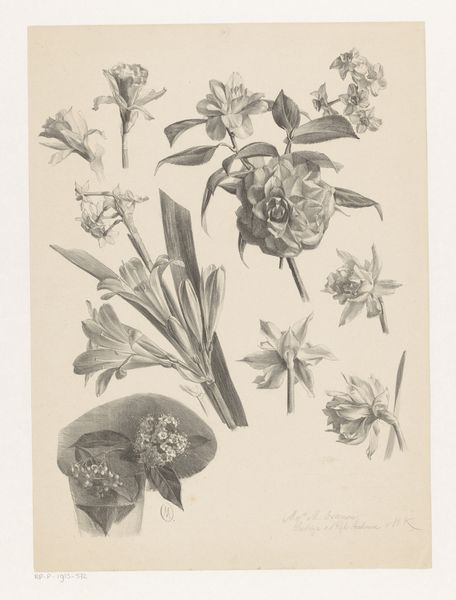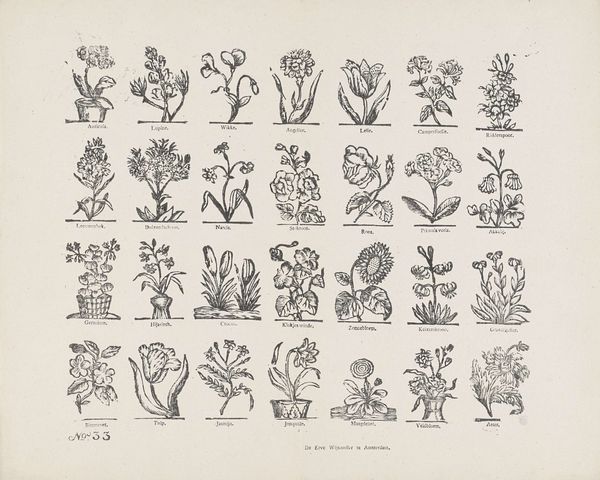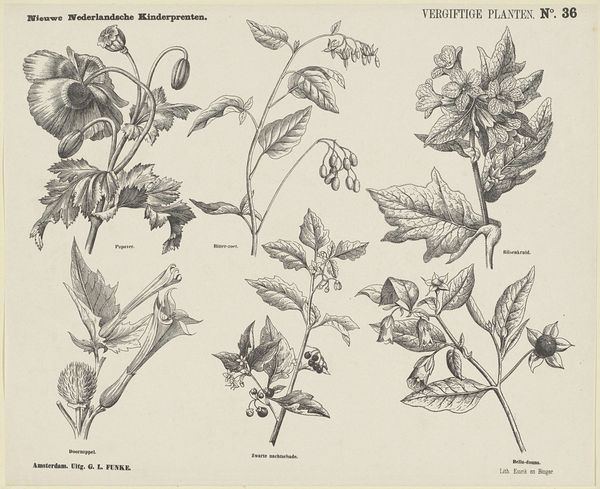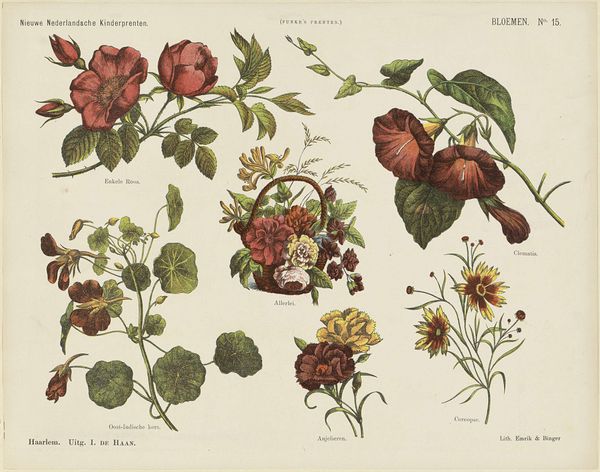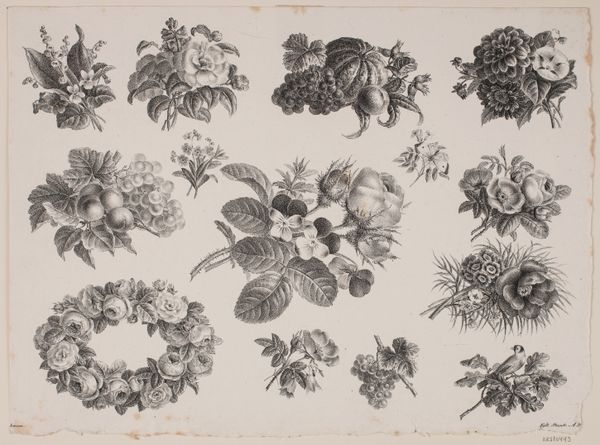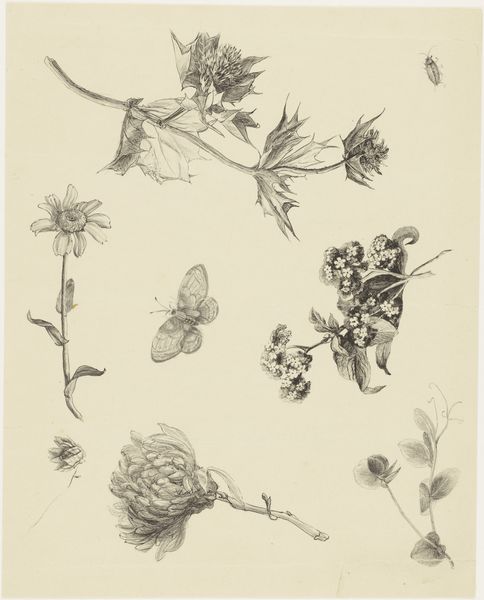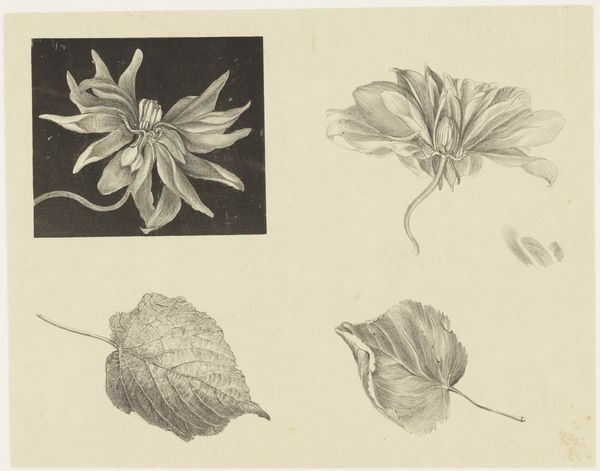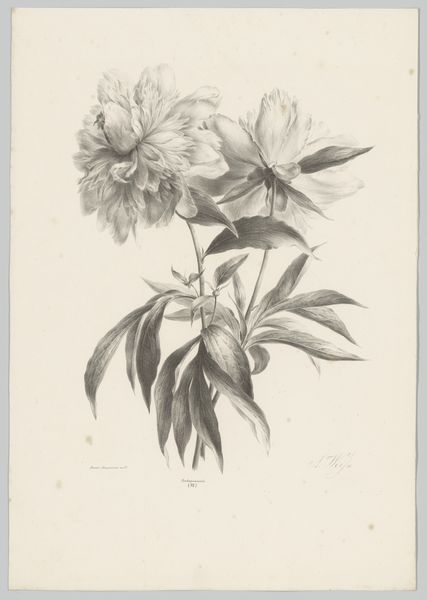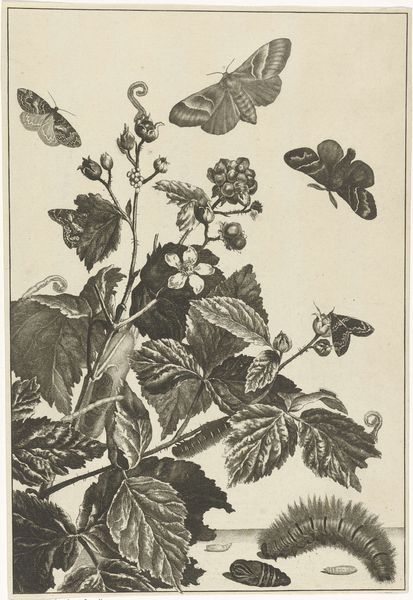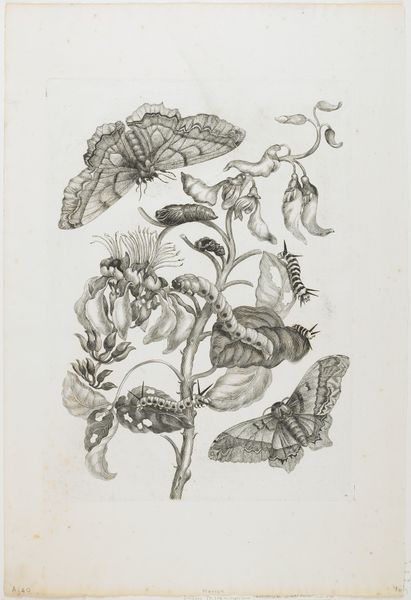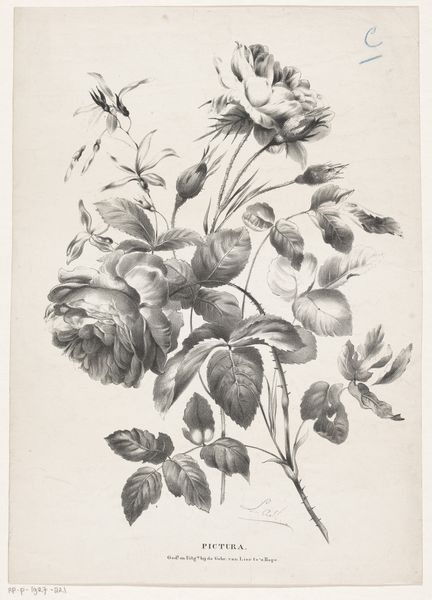
Dimensions: height 339 mm, width 432 mm
Copyright: Rijks Museum: Open Domain
Curator: Before us, we have a print titled "Bloemen," meaning "Flowers" in Dutch. It’s by George Lodewijk Funke, dating back to somewhere between 1865 and 1875. It employs etching and ink on paper, quite lovely, wouldn't you agree? Editor: Intricate, yes, but initially austere. The monochrome lends a sense of formality, almost scientific classification, despite the Romantic and decorative-art flourishes. Curator: Exactly. Note the compositional arrangement; various blossoms are depicted seemingly at random, yet carefully balanced on the page. What do you make of Funke’s choice to present them in this particular format? Editor: It feels very much of its time, given the rise of botany as a bourgeois pursuit in the mid-19th century. This print likely functioned both as a decorative object and an educational tool. Consider its mass production and dissemination; such imagery brought natural study into domestic spaces. Curator: A valid point. Furthermore, observe the details rendered by etching technique. Notice the variance and subtlety of line, the careful building up of tone and texture in petals, leaves, stems— Editor: I concur. The cross-hatching establishes form meticulously. What’s more, it references popular printmaking used for mass dissemination, but also fine art book illustration, a duality worth noting when situating Funke’s intention. Curator: Consider too that the print includes text in multiple locations with what seem to be labels for types of flower as well as publisher information: “Nieuwe Nederlandsche Kinderprenten”, BLOEMEN, NO. 15", etc. These additions firmly tie it to print’s function as a communicator as much as decoration. Editor: Precisely. Though ostensibly pleasing to the eye, such botanical prints upheld subtle codes of cultural aspiration. These were symbols easily decoded and displayed as an announcement of cultural awareness, and class status. Curator: Looking closer at individual blossoms, a visual catalogue is assembled that encourages contemplation—from simple field flowers to blooms that represent the ornamental hothouse collections popular among wealthier demographics. It serves a practical and political purpose then, Editor: It seems the closer one examines “Bloemen”, the more the details embedded point towards understanding its moment within social hierarchies of the era as it showcases artistic craftsmanship and production values through careful distribution to receptive consumers. Curator: Absolutely, a successful combination that informs our perceptions today.
Comments
No comments
Be the first to comment and join the conversation on the ultimate creative platform.
